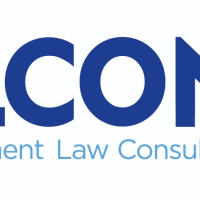The Top 5 Cloud Security Threats you need to know in 2022
Organizations around the world are experiencing significant changes in the business environment. Remote work, digitalization, and evolving regulations are only a few of the changes companies deal with. The last thing an organization needs is a cyber incident that can have far-reaching impacts, including data loss, loss of reputation, and recovery costs.
Cloud computing promises improved cybersecurity when compared to most legacy on-premise systems. But many organizational leaders aren’t fully aware of the threats and vulnerabilities that come with cloud computing. However, cyber threats are steadily increasing, targeting unassuming SMBs with little to no additional cybersecurity protocols for their cloud implementations.
Staying on top of the latest cybersecurity trends is essential to protecting sensitive business and personal data. Let’s talk about the top five cloud security threats that every organization needs to be aware of in 2022.
How secure is the cloud?
Before we dive head-first into our discussion about cybersecurity threats, let’s talk about cloud security. How secure is the cloud anyway?
In a nutshell, data stored in the cloud is more secure than on-premise implementations, but you’ll still want to have backups and other security controls built for the cloud. Data stored in the cloud is encrypted, so only authorized users can access sensitive information. But if those security keys and credentials get into the wrong hands, it could be a disaster.
Businesses operating in industries such as banking and finance will need to deploy extra security tools to keep company and consumer data safe. Some of those security features for banks include debit card blocking, EMV chips, and internal security controls.
Cybersecurity threats you need to know about
The cloud offers organizations a seamless way to communicate, collaborate, and access crucial business information remotely so that teams can be more productive and managers can have more visibility throughout their systems and data. But there are many cybersecurity threats that businesses should watch for.
Here are the 5 top cloud security threats of 2022:
1. Data breaches and data leaks
Our world is more connected than ever before, thanks to powerful technologies like the cloud. But with a more connected environment comes a larger attack surface for hackers to take advantage of.
Data breaches and leaks often occur quietly and discreetly on your network without teams knowing until it’s too late. This way, cybercriminals can get even more data from you to use for nefarious purposes. For example, some hackers sell your customer data to third parties, post it in forums on the “dark web” to be used by other hackers, or can even hold it for ransom, refusing to give access to business data without payment.
2. Data loss
Another major cybersecurity issue in the cloud is data loss. This usually happens after your system has been breached and bad actors begin to steal your data quietly behind the scenes. Storing data in the cloud can quickly become hard to manage, and some organizations may skip a few scheduled backups or vulnerability scans to avoid the problem.
But if your data is stolen and held for ransom, you will be forced to pay to have your data given back to you. That is unless you have sufficient backups to support your organization in the event of a serious data breach.
3. Access management
With so many organizations using cloud applications and solutions, there is an increased need to manage who can access your network and who can’t. Most organizations do this with password-protected applications, but that’s not always enough to protect your business data from unauthorized users.
Access management is an ongoing process of identifying, tracking, and controlling authorized users’ access to specific systems or applications. It involves creating policies and processes to maintain access privileges such as zero-trust, MFA, and identity management activities.
4. Insecure APIs
Another top threat against cloud implementation is insecure APIs. Many organizations’ APIs are openly exposed to the Internet, which is a major issue since businesses typically depend on APIs for mission-critical applications and processes. In 2021, 94% of businesses experienced an API-related security incident.
APIs still contain security flaws that must be addressed by each organization according to its security needs. APIs are just as susceptible to a breach as other weaknesses on company servers and networks and should be regularly maintained to avoid data loss.
5. Misconfigured cloud storage
Finally, cloud misconfiguration rounds out our list of top cybersecurity threats for organizations. Although the cloud has been around for nearly a decade, it’s still a fairly new technology that IT professionals are still learning how to implement properly. Many organizations use a professional service for cloud storage configurations, but some prefer to do it all in-house.
If this is the case for your company, it’s important to ensure that your data configurations are secure and structured according to security standards.
Cloud security best practices for small businesses
Now that you know what your business applications in the cloud are up against, let’s discuss some best practices that can help protect your small business from threats and serious cyberattacks.
Protect your network
Use proven and trusted cybersecurity tools to protect your network. Some examples include tools like firewalls, antivirus software, data backups, VPNs, and risk assessment monitoring. These are all standard tools that every organization should have in their cybersecurity toolbox.
Keep your cloud assets safe
Businesses today have countless systems and applications linked to the cloud. While this increases a company’s risk exposure, a few cloud security threats are more serious than others.
Organizations can protect themselves from the top 5 cloud security threats of 2022 with different security controls built for cloud implementations. Do a cloud security audit, create a plan with your security partners, and implement cloud tools and training to help mitigate the risks associated with using the cloud for business operations and storage.
full article here: https://cloud-clarity.io/the-top-5-cloud-security-threats/
Cloud security and cost management for all scales and sizes
Labour’s new Employment Rights Bill: challenges employers...
More Articles
The Value of a Sustainability Strategy in the Tender Process
Unlocking the Power of Raw Financial Data
Would you like to promote an article ?
Post articles and opinions on Professionals UK
to attract new clients and referrals. Feature in newsletters.
Join for free today and upload your articles for new contacts to read and enquire further.







